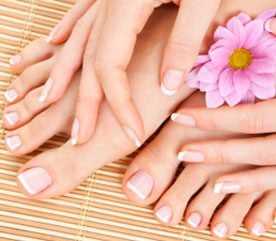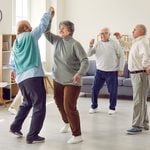7 Ways to Keep Your Feet Healthy
Feet bear the brunt of all your weight-bearing activities like walking, jogging, etc. A little preventative care goes a long way in maintaining feet. Read on to find out what you can do to reduce foot problems.

1. Beat Athlete’s Foot
A fungal infection that flourishes in warm and moist places, athlete’s foot attacks the toes, soles or sides of your feet and causes itchy, scaly and cracked skin. It can usually be cleared up with an over-the-counter antifungal medication that contains either miconazole or tolnaftate. If the condition persists longer than 2 weeks, however, see your doctor for a drug prescription.
To prevent athlete’s foot, keep your feet clean and dry. Use an antifungal powder on them regularly. Wear shoes made of materials that breathe such as leather and canvas, and socks that wick away moisture. Always allow your shoes, especially sneakers or running shoes, to dry out completely between wearings. Switch to a different pair of shoes every day.
2. Treat and Prevent Blisters
Caused by continuous friction against the skin, liquid-filled blisters should be covered with a sterile gauze pad and allowed to heal on their own. You can protect the area from further irritation with a moleskin or cotton circle designed for that purpose and available at most drug stores.
If a blister is very large, you may want to puncture it. Sterilize a needle with antiseptic (not a match flame) and prick the edge of the blister. Blots up the liquid with gauze, clean the area with antiseptic, and cover it with a sterile gauze pad.
3. How to Care for Bunions
The bony protrusion that some people develop at the base of the big toe is called a bunion. It may be hereditary or, in women, caused by wearing high-heeled shoes with pointed toes. Bunion sufferers should wear comfortable shoes that will not press on the affected bone. Soft pads or cushioned socks will give additional relief. Most bunions can simply be accommodated in this way. If osteoarthritis or bursitis makes a bunion chronically painful, however, your doctor may recommend surgery to realign the distorted bones.
4. Removing Corns
Like calluses, corns are caused by rubbing and friction on cramped toes. Hard corns develop on top of toes, soft corns between toes. Both can be prevented by wearing comfortable shoes that fit properly.
You can remove some corns yourself. Soak your feet in warm water every day and gently rub the built-up skin with a towel or a pumice stone – the surface will gradually peel away. Never slice a corn with a razor blade; if the growth is stubborn or painful, see a podiatrist. In the interim, use lambs wool or moleskin pads to protect the tender spots.
5. Treatment for Hammertoes
A deformity that develops in the joint of the second, third or fourth toe, a hammertoe is more common in women than in men and probably results from wearing high heels with pointed toes. Protective pads can bring relief, or our podiatrist may suggest wearing an orthotic brace to manoeuvre the bent toe in a more comfortable position. In severe cases, surgery may be required.
6. Healing Ingrown Toenails
An ingrown toenail usually develops when either corner of a big toenail grows into the flesh of the toe, causing redness, swelling, pain, and sometimes infection.
A doctor or podiatrist can cut away the ingrown nail and treat the infection with antibiotics. To prevent further trouble, make sure that your shoes don’t put undue pressure on the nails of your big toes. Cut your toenails straight across at the end of the toe.
If, after several treatments, an ingrown toenail keeps recurring, ask your podiatrist about surgical options for preventing it.
7. Painful Heel Syndrome
As you grow older, the heel’s fatty tissue thins out. Pressure on the heel causes inflammation of the connective tissue and muscle. The pain is greatest in the morning when you first stand up.
For acute discomfort, take an analgesic and apply an ice pack to the heel for 15 minutes. Gently massage and stretch the foot and elevate it whenever you can. Ask your doctor for shock-absorbing heel inserts. During an attack, which can last several months, limit your exercise to non weight-bearing activities such as swimming and bicycling.



